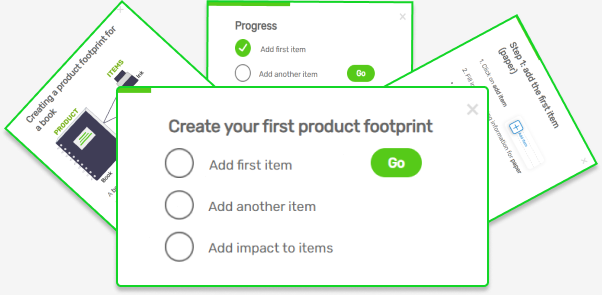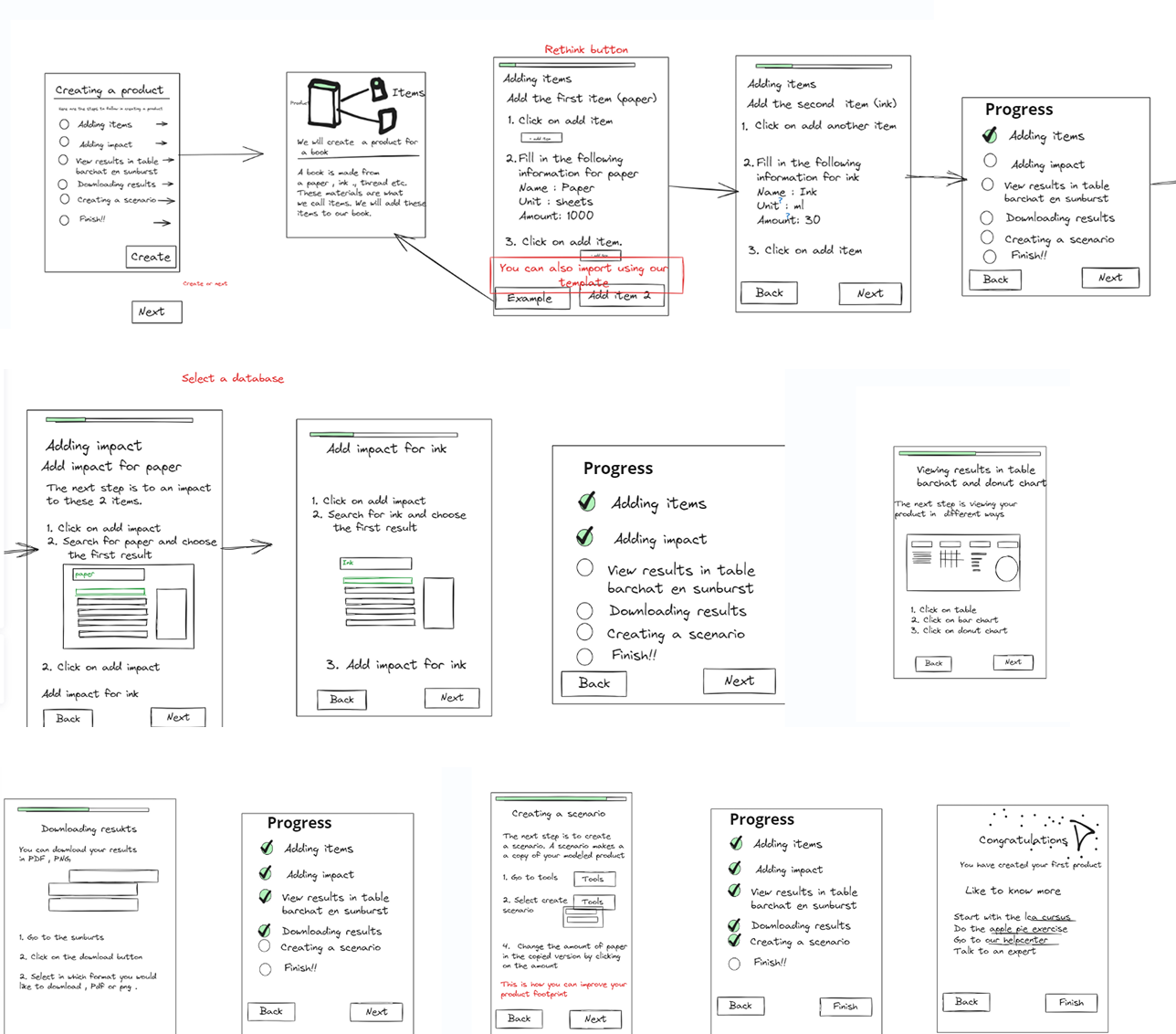
ONBOARDING TUTORIAL
- PROJECT
- Onboarding tutorial for trial users
- ROLE
- UX/UI Designer en Developer
- CLIENT
- Ecochain
- DURATION
- 4 months
- SKILLS
- UX/UI Design, Prototyping, User Testing, Front-end Development

This case study outlines the process and outcomes of redesigning the onboarding tutorial for Ecochain's Mobius software. The project aimed to enhance the user experience for new users by creating a more intuitive and engaging tutorial that effectively guides them through the initial steps of using the software.
Ecochain is a company specialized in Life Cycle Assessment (LCA) — a method used to measure the environmental impact of a product throughout its entire life cycleEcochain offers two LCA software solutions: Ecochain Mobius and Ecochain Helix. The main difference between the two lies in their target users and applications: Ecochain Mobius promotes ecodesign and is designed for product designers with limited knowledge of LCA. It enables them to easily create LCAs and make more sustainable design choices early in the development process. Ecochain Helix empowers companies to create LCAs at scale for their production facilities. It provides insights into environmental impacts at the company, process, and product level, supporting strategic sustainability decisions.
The existing onboarding tutorial within the Mobius software was intended to help guide users through the process of creating a product. However, based on feedback from clients, the tutorial was perceived as unclear, unhelpful, and lacking in practical guidance. Many users struggled to complete the initial steps and failed to understand the overall structure and capabilities of the software.
The primary goal of this project was to redesign the onboarding tutorial to enhance its clarity, usefulness, and overall user experience. The aim was to create a more intuitive and engaging tutorial that would effectively guide users through the initial steps of using the Mobius software, helping them understand its features and capabilities.
By focusing on both usability and learning, this onboarding experience needed to support users with little to no LCA knowledge, empowering them to get value from the software right from the start.
Method:Expert review , affinity mapping
To assess the effectiveness of the existing Mobius walkthroughs, I conducted a heuristic evaluation. This involved a detailed review of the onboarding flows where I:



Method: Design Review, Conceptualization, Userflow design, Lofidelity sketchin
After researching the existing Appcues flows, I began with low-fidelity sketches. I was tasked with creating a step-by-step tutorial for trial users. The tutorial needed to include key functionalities

To illustrate the tutorial, I designed a concept using a book example, which would be easy for everyone to understand. With this concept in mind, I created low-fidelity sketches and reviewed the flow to assess its effectiveness. Based on this review, I made adjustments to the flow and then presented it during a design review session.
This is the final product developed in the Möbius software. After putting in a great deal of hard work and effort, the product was successfully launched. I also received positive feedback from users following its release.Let me know if you want to make it more formal, creative, or personal!.